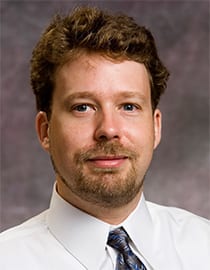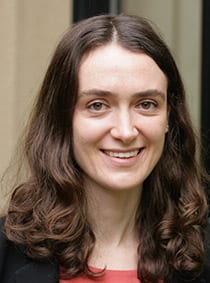By Andrew Cohen
Concerns about the state’s housing affordability crisis often lead to the California Environmental Quality Act (CEQA). Developers and other new housing proponents argue that the 1970 law, designed to protect the environment and alert the public to proposed construction in their communities, is unfairly wielded to deter new projects.
Berkeley Law Professor Eric Biber is co-leading a research group that examines that well-established narrative.

In studying obstacles to affordable housing, the team has so far discovered that local land-use regulations and policymaking may play a much larger role in how quickly—or slowly—projects move forward.
“CEQA may not be the main driver,” says Biber, director of the law school’s environmental and energy law programs. “I’m not surprised that local governments often have a veto say over development, but I was surprised at the wide variation of approval processes across jurisdictions.”
Biber is leading the analysis along with Moira O’Neill, who holds research appointments at Berkeley and Columbia. Former student and research assistant Giulia Gualco-Nelson ’18 joined their research team in 2016, and is now working full-time on the project for one year before clerking.
The full group also includes several Berkeley Law students and undergraduate research apprentices.
The team’s first report examined Bay Area housing projects with five or more units in five jurisdictions—San Francisco, Oakland, Palo Alto, San Jose, and Redwood City—to gauge approval timetables and the steps those cities required. Of the study’s 254 projects, only seven faced CEQA lawsuits. Although developers contend that the mere threat of CEQA violations creates a daunting hurdle for new housing, Biber says the situation may be more complicated.
“I went into this project guessing that up to 25 percent of new housing projects result in litigation, but it’s really around 5 percent,” he notes. “Also, the varying litigation rates we saw across Bay Area cities didn’t correlate with the timeframes for approval. That cuts against the notion that CEQA is a strong factor here. The local political process is clearly more important.”
San Francisco and Redwood City, for example, had the two highest litigation rates even though San Francisco has the longest approval process timeframe and Redwood City the shortest. Oakland and San Jose have streamlined their approval process to help spur development—but with no corresponding impact on litigation.
Expanding their data
Biber emphasizes that the research is ongoing, and their current results are preliminary. His team is now conducting similar research in Los Angeles and surrounding communities, and those results may significantly affect their ultimate conclusions.

“Affordable housing is the biggest issue facing California today,” Gualco-Nelson says. “I grew up in a dense, urban neighborhood in San Francisco where most my friends’ families struggled with rent and housing security, even before the first big tech boom. The difficulty of approving projects is one of the largest barriers to creating housing that’s affordable to all income levels.”
Gualco-Nelson worked in the housing arena before law school. She has helped design the project’s data collection process and improve the research methodology, compiled articles for a literature review, and drafted reports. O’Neill says her “immediate interest and commitment to this work has proven essential.”
As a 3L—in addition to writing up revisions to methods, interviewing field participants, supporting fundraising activities, and contributing analysis of findings—Gualco-Nelson helped manage the workflow for 13 undergraduate and graduate student researchers. They helped collect data and summarize relevant planning and zoning code provisions in context with state land-use law.
“That’s what other land-use regulation housing cost projects have lacked,” Biber says. “They’re often run by economists or planners, and don’t explore the full legal context for how the process works. Having lawyers and law students work on this is hugely beneficial.”
Even though she spent considerable time on this effort while navigating coursework and other extracurricular activities, Gualco-Nelson says, “The research was so compelling that I couldn’t imagine stopping or scaling back my participation.”
For Biber, the project’s value—in addition to questioning common beliefs—is in confronting questions vital for achieving housing stability.
“Hoes does land-use regulation work? Where is development occurring? What do the litigation rates show?” he says. “There has been a lot of speculation over the years, but no one had accumulated the recent data. We want to be thoughtful and thorough in order to give sound advice to state policymakers about how to deal with our housing problem.”